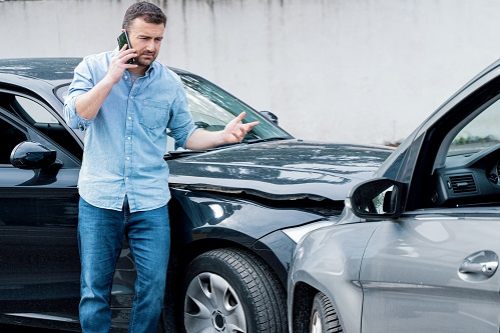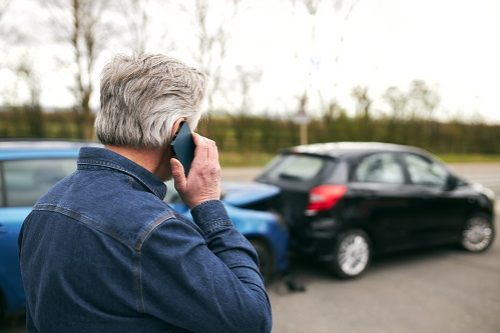- Teens are involved in more accidents over the summer
- Why are summer months risky for teen drivers?
- How to reduce teen driving accidents during the summer
- Summer teen driving safety: State-specific initiatives
- What to do after an accident involving a teen driver
- Final thoughts: Keeping your teen safe on the road
- Frequently asked questions
Teens are involved in more accidents over the summer
NHTSA data shows that May through August pose a higher risk of teen drivers being involved in accidents.
The table below shows the number of teen drivers involved in accidents from May through August compared to the remainder of the year and the average difference.
| Year | Crashes, May-Aug | Crashes Remainder | Average, May-Aug | Average Remainer | Average difference |
|---|---|---|---|---|---|
| 2019 | 1,469 | 2,452 | 367 | 307 | 61 |
| 2020 | 1,738 | 2,729 | 435 | 341 | 93 |
| 2021 | 1,833 | 3,201 | 458 | 400 | 58 |
| 2022 | 1,707 | 3,045 | 427 | 381 | 46 |
| 2023 | 1,776 | 3,224 | 444 | 403 | 41 |
| Total, | 8,523 | 14,651 | 2,131 | 1,831 | 299 |
Why are summer months risky for teen drivers?
There are a few reasons the summer months are so risky for teen drivers:
- Teenagers are out of school and more likely to drive. During the school year, teens are in school all day and have less free time to be on the road, while the summer months afford more time to be out with friends.
- Summer jobs, social events and vacations increase the distance driven. Teens may drive for vacations or day trips, meaning longer hours on the road and more traffic. Many teens have summer jobs, which means driving almost every day. Lack of driving experience and more time on the road play a huge part in the uptick in accidents.
- Distractions like smartphones, friends in the car and other interruptions. Teens often drive around with their friends, which may make them more distracted, more likely to text and drive, use their phones, talk and listen to music loudly while driving.
- Night driving. Teens drive more at night during the summer, to and from work or to and from social events. Among all age groups, accidents happen more at night, specifically after midnight.
- Riskier behavior. One of the reasons teens are the most expensive age group to insure is that they are risky drivers, and they engage in some dangerous habits and activities while driving. Speeding, not wearing seat belts and texting while driving are very common. Also, during the summer, there’s no school alarm in the morning, and that means more nighttime driving and more parties, often involving alcohol and other substances, leading to impaired driving.
We spoke with Jessica Perry of Rutland, Massachusetts, a parent of three: one teenager and two in their early 20s, about teen driving safety.
Were you aware that there's an uptick in teen accidents during the summer months?
“I was not aware, but I would expect it. They have more time on the road when they are not in school, there are more parties/groupings of kids, which makes them more careless.”
What were your major concerns when they started driving?
“My major concern is that teenagers don’t perceive the dangers the way adults do. They have an ‘it won’t happen to me’ approach to decision making and consideration of consequences (including risk taking under peer pressure and for acceptance). They think they are infallible.”
Did you have conversations about texting, distractions (friends in the car), speeding and impaired driving?
“I absolutely talk to them all the time about safety, distracted driving, speeding. I’m a nurse and former EMT and have seen plenty of accidents; I am pretty direct with them. Again, they feel like they are infallible and know everything, and ‘that’s just mom being mom.’”
Did they do any special courses or just regular driver's ed?
“Just driver’s ed. I think more would be valuable, but they would resist. It also gets very expensive. If supplemental courses brought down the price of insuring new drivers, it would be more worth the struggle.”
Jessica Perry, Rutland, Massachusetts.How to reduce teen driving accidents during the summer
Thankfully, there are some things parents can do to reduce teen driving accidents during the summer. Following through and doing this throughout the year is a good idea.
1. Set driving boundaries.
- Set a curfew. Accidents tend to happen late at night in all age groups.
- Limit passengers. The more kids in the car, the more distractions.
- No phone usage. The phone goes in the pocket or the glove box, no exceptions. This is one of the most important things for safety and preventing distracted driving. Drivers should pull over to respond to calls or texts.
2. Regularly discuss safe driving practices.
- Open dialogue and direct conversation are the key to communicating the importance of safe driving to your teen.
- Relay personal experiences of family and friends about accidents and experiences with the police.
- Let your teen know exactly what’s expected so there’s no question
3. Encourage defensive driving courses or refresher lessons.
- A professional driving instructor can provide valuable advice that a teen may listen to since it comes from a third party, not mom or dad.
- Many driving schools offer teen-specific defensive driving courses.
- Lack of experience is one of the main causes of teen accidents, and a refresher course can be a valuable tool for gaining knowledge.
4. Utilize technology for monitoring driving behavior.
- There are apps and in-vehicle monitoring systems that track your teen's driving habits – speeding, hard braking, starts and stops – and can tell if distracted driving is the cause.
- As a bonus, many of these usage-based programs can be linked to insurance and reward good behavior with discounts.
- Dash cams and telematics devices also do the trick.
5. Regular maintenance checks ensure the car is in good condition.
- Ensure brakes are working properly, as well as turn signals and all vehicle safety features.
- Teach your teen how to change a tire and look for issues with the car.
- Discuss what to do if the car has an issue on a busy road and how to get to safety.
Cooney says it can be difficult to get teen drivers to understand the dangers of distracted driving. “Mainly, we tell them that at varying speeds, one second of attention can lead to horrible consequences,” he says. “The bandwidth a driver has, and especially young drivers, can only handle one thing at a time.”
Summer teen driving safety: State-specific initiatives
Many states have teen driver safety initiatives, including:
New York: The New York Department of Health has an electronic toolkit to help teen drivers and their parents. It includes a template for a driving contract that the teen driver signs to pledge to drive safely and obey all traffic laws.
Parents can sign up for electronic notifications to keep them in the loop if teens get tickets or other driving-related violations.
Florida: The Florida Highway Safety Motor Vehicle Division also offers valuable online resources. It provides all the rules and regulations for teen drivers to get and keep their license, stay safe, as well as guidance for parents
Check your state’s division of motor vehicles or your local AAA chapter for resources.
Schools like the CMSC, where Cooney runs his program, offer defensive driving courses. They can be very helpful to teen drivers and all ages. “The main concept is situational awareness,” he says. “Things move so fast out there nowadays that you have to anticipate someone cutting into your lane in order to preserve the safety cushion around your car.”
What to do after an accident involving a teen driver
Despite all preventative measures, accidents still happen. Teach your teen what to do in case of an accident.
Immediate steps:
- Stay calm
- Make sure everyone is safe and out of the way of oncoming traffic
- Stay at the scene
- Do not admit fault
- Call the police if there are any injuries, there is serious damage, the other party/parties are not cooperative, or if something doesn’t feel right
Insurance process:
- Exchange insurance information with the other parties
- Take photos or video of the scene and the damage
- Call the insurance company’s claims number to report the accident
- Cooperate with the insurance adjuster assigned to your case
- Meet all deadlines and fill out all forms promptly so everything goes smoothly
- If you have the right coverage, you will eventually receive a check from the insurance company to pay for the damage to your vehicle
- If you damaged someone else’s vehicle, your insurance company will send a check to them
- If multiple parties were involved, sometimes the investigation takes a while
Minimize the long-term impact of an at-fault accident:
- Take a defensive driving course after the accident to demonstrate your commitment to safer driving; sometimes, the insurance company will offer a discount
- Explore accident forgiveness options if available
- Check for other discounts that could reduce your rates
- Shop around and compare rates from other companies
Final thoughts: Keeping your teen safe on the road
The best way to keep teens safe on the road is to model safe driving behavior, have direct conversations about safe driving habits, sign your teen up for defensive driving courses and monitor cell phone usage. Practice driving with them whenever you can, as a lack of experience also contributes to accidents. Prevention is key.
Sources:
- AAA. “The 100 Deadliest Days: Teen Driver Deaths Jump in Summer Months.” Accessed June 2025
- NHTSA. “Overview of Motor Vehicle Traffic Crashes in 2023.” Accessed June 2025
- NHTSA. “2022 Teen Distracted Driver Data.” Accessed June 2025
- CDC. “Risk Factors for Teen Drivers | Teen Drivers.” Accessed June 2025
Frequently asked questions
How many teen crashes involve distraction?
In 2023, 8% of fatal crashes involving distracted driving were caused by teen drivers, according to the NHTSA.
What are the most common teen driver accidents in summer?
Drinking and driving, speeding and distracted driving are the most common – and deadliest – causes of teen accidents during the summer, according to AAA.



